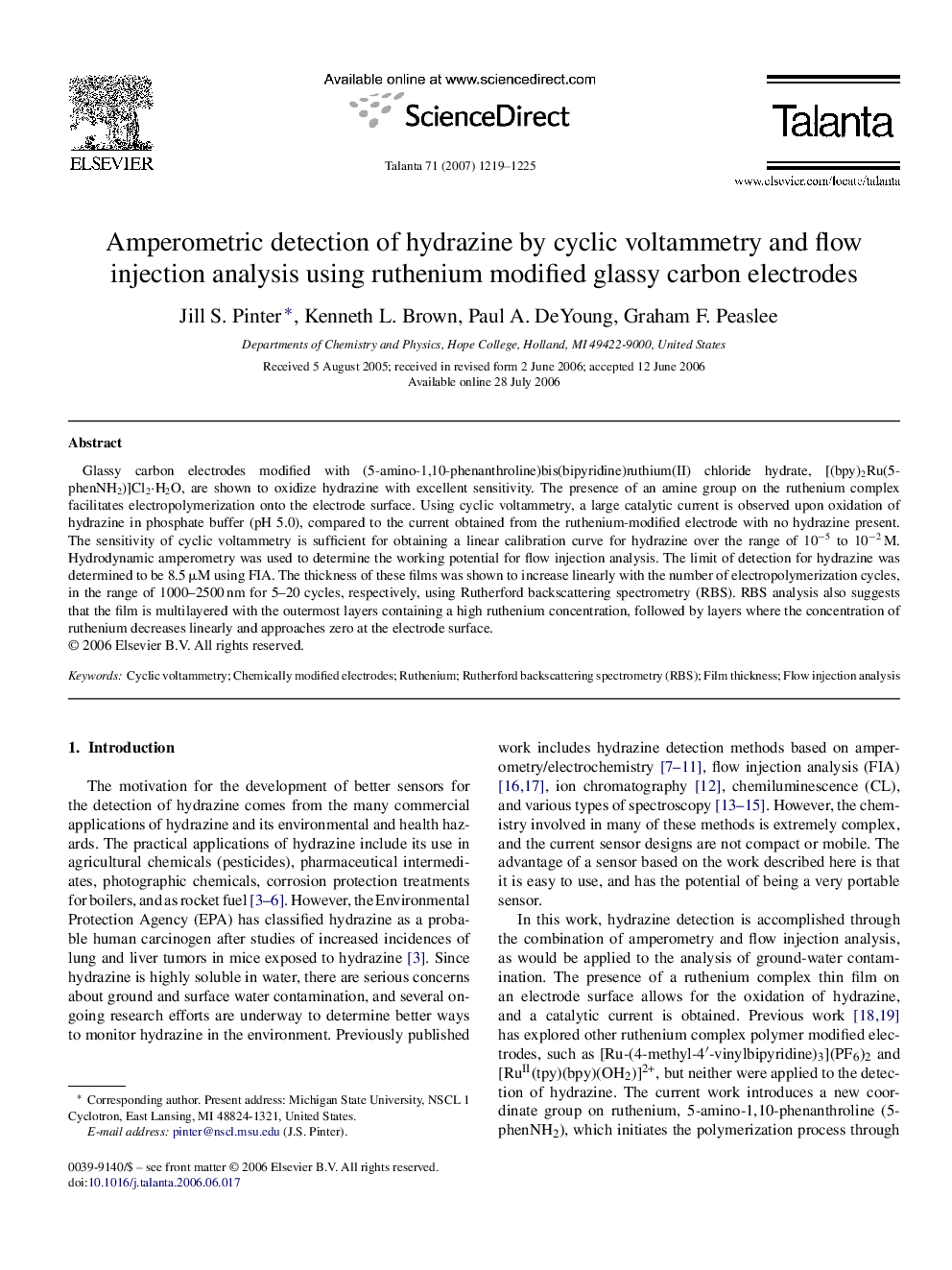| Article ID | Journal | Published Year | Pages | File Type |
|---|---|---|---|---|
| 1246137 | Talanta | 2007 | 7 Pages |
Glassy carbon electrodes modified with (5-amino-1,10-phenanthroline)bis(bipyridine)ruthium(II) chloride hydrate, [(bpy)2Ru(5-phenNH2)]Cl2·H2O, are shown to oxidize hydrazine with excellent sensitivity. The presence of an amine group on the ruthenium complex facilitates electropolymerization onto the electrode surface. Using cyclic voltammetry, a large catalytic current is observed upon oxidation of hydrazine in phosphate buffer (pH 5.0), compared to the current obtained from the ruthenium-modified electrode with no hydrazine present. The sensitivity of cyclic voltammetry is sufficient for obtaining a linear calibration curve for hydrazine over the range of 10−5 to 10−2 M. Hydrodynamic amperometry was used to determine the working potential for flow injection analysis. The limit of detection for hydrazine was determined to be 8.5 μM using FIA. The thickness of these films was shown to increase linearly with the number of electropolymerization cycles, in the range of 1000–2500 nm for 5–20 cycles, respectively, using Rutherford backscattering spectrometry (RBS). RBS analysis also suggests that the film is multilayered with the outermost layers containing a high ruthenium concentration, followed by layers where the concentration of ruthenium decreases linearly and approaches zero at the electrode surface.
